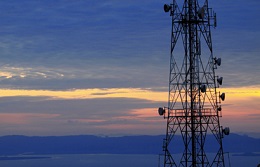LTE infrastructure spending is peaking as operators begin to slowdown the rate of 4G rollouts, a new report has claimed.
According to research house IHS, spending hit $6 billion (€5.3 billion) globally during the first quarter of 2015, a one percent sequential decline. Across 2015, spending is expected to hit a high of $23.3 billion (€20.7 billion and then fall from next year.
Stéphane Téral, Research Director for Mobile Infrastructure and Carrier Economics at IHS, said: “As we anticipated, we’re reaching the peak of LTE rollouts, and LTE is now set to perform at $6 billion a quarter for some time as operators complete their major remaining rollouts.”
The LTE rollouts were not enough to offset the continued decline in 2G and 3G spending, leading to an overall eight percent sequential decline on networking infrastructure spending, clocking in at $11 billion.
However, compared to 2014, 2G, 3G and LTE spending was up four percent, thanks to TDD LTE rollouts in China.
According to Ericsson’s 2015 Mobility Report, also unveiled this week, LTE networks currently cover around 40 percent of the world’s population and will grow to 70 percent by 2020.
There are currently 393 commercial LTE networks across 138 countries, the vendor said.
Further, it said there were 600 million LTE subscribers at the end of March, which will increase to 3.7 billion by 2020.
The report also saw Ericsson revise its prediction for the amount of devices connected to the Internet of Things.
The vendor’s CEO Hans Vestberg had previously envisioned in 2010 that there would be 50 billion connected devices by 2020, but this was revised down to just 26 billion.
The report said: “New use cases are emerging for both short and long range applications, which would lead to even stronger growth of connected devices, confirming we are well on the way to achieving the vision of 50 billion connected devices.”
Rima Qureshi, Senior Vice President, Chief Strategy Officer, Ericsson, commented: “This immense growth in advanced mobile technology and data usage, driven by a surge in mobile connectivity and smartphone uptake, will makes today’s big data revolution feel like the arrival of a floppy disk.
“We see the potential for mass-scale transformation, bringing a wealth of opportunities for telecom operators and others to capture new revenue streams. But it also requires greater focus on cost efficient delivery and openness to new business models to compete and remain effective.”


